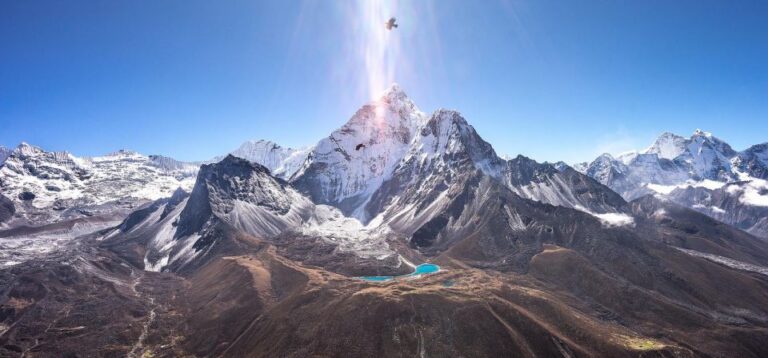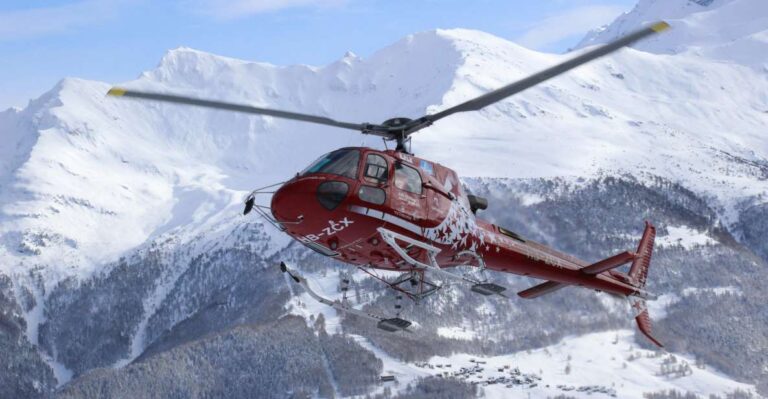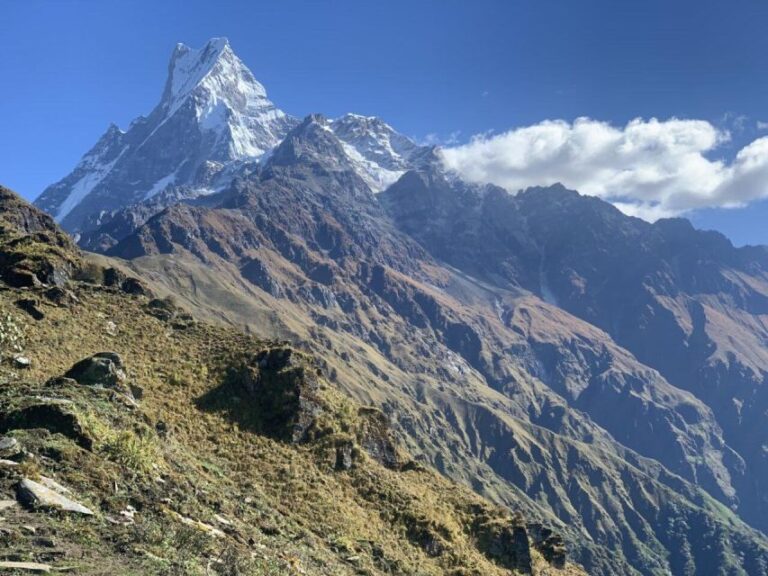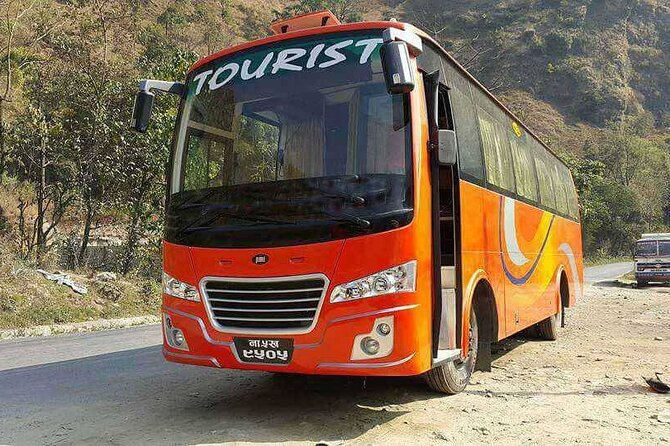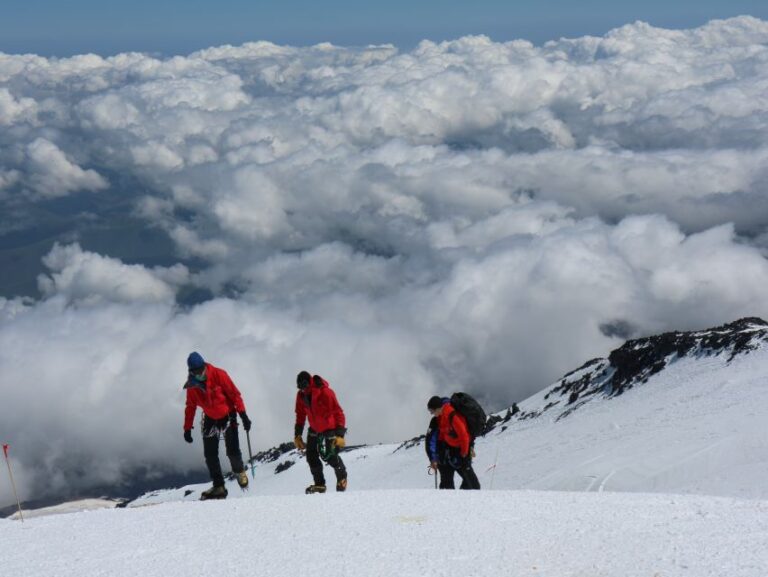Annapurna Base Camp Trek
Embarking on the Annapurna Base Camp Trek presents explorers with a chance to enjoy the awe-inspiring beauty of the Himalayas.
As trekkers navigate through diverse landscapes and varying altitudes, they are met with a blend of challenges and rewards that test both their physical stamina and mental fortitude.
However, beyond the physical demands lies an experience that transcends mere adventure, offering a deeper connection to nature and oneself.
Good To Know
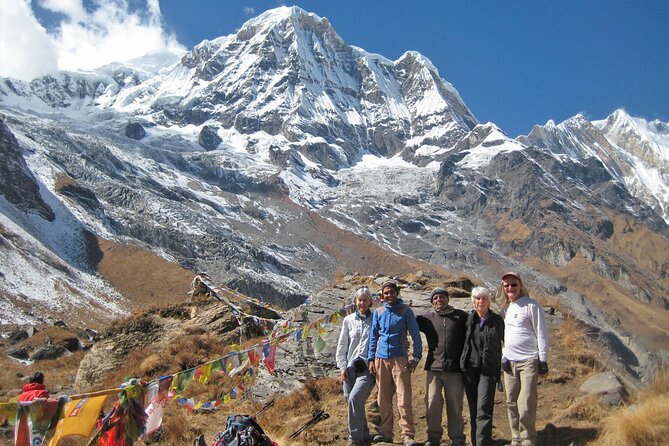
- Small-group 11-day trek with airport pickup, accommodation, meals, and sightseeing included
- Trek involves 6-7 hours of daily walking on steep terrain, reaching altitudes up to 4,130m
- Optimal trekking seasons in Autumn and Spring, with safety adjustments by the trek leader
- Full refund for cancellations 24 hours in advance, no refunds within 24 hours
It's also worth checking out some other tours and experiences nearby.
Trek Overview
Embarking on the Annapurna Base Camp Trek offers adventurers a thrilling 11-day journey through the majestic Himalayas. Trekking challenges await, with 6-7 hours of walking daily on steep terrain, reaching altitudes up to 4,130m. Trekkers will push themselves physically while being rewarded with breathtaking views of snow-capped peaks and diverse landscapes.
Plus, the trek provides enriching cultural experiences as hikers pass through local villages, interacting with the warm and hospitable Nepalese people. This immersion allows trekkers to learn about traditional customs, taste authentic Nepalese cuisine, and witness the unique way of life in the Himalayan region. The Annapurna Base Camp Trek promises not only physical challenges but also a deep cultural connection with the local communities along the route.
Itinerary Highlights
As trekkers traverse through the Annapurna Base Camp route, they’ll encounter a series of captivating itinerary highlights that showcase the beauty and diversity of the Himalayan region.
The journey is peppered with scenic viewpoints offering panoramic vistas of snow-capped peaks and lush valleys.
Along the way, trekkers will have cultural encounters with local villagers, providing insight into their traditions and way of life.
Wildlife sightings add an element of excitement, with chances to spot Himalayan wildlife such as snow leopards and blue sheep.
On top of that, trekkers will have the opportunity to enjoy local traditions, witnessing colorful festivals and ceremonies that are an integral part of the region’s cultural fabric.
Accommodation Details
Upon reaching the Annapurna Base Camp route, trekkers will find a variety of accommodation options that cater to different preferences and budgets. The tea house experience is prevalent along the trek, with basic yet comfortable rooms available. These tea houses offer twin-shared rooms with the option for a single supplement. Accommodation amenities typically include cozy bedding, shared bathrooms with hot showers, and communal dining areas where trekkers can socialize and refuel.
While the facilities may be simple, they provide a cozy retreat after a day of trekking. Trekkers can expect a rustic charm in these tea houses, seeing the local culture and enjoying a warm and welcoming atmosphere amidst the breathtaking Himalayan views.
Meal Options
For trekkers embarking on the Annapurna Base Camp trek, a variety of meal options await along the route, providing sustenance and fuel for the challenging journey ahead. Exploring the culinary scene can be a delightful experience, offering a glimpse into local flavors and traditions.
Here are some meal options to tantalize your taste buds:
- Dal Bhat: A traditional Nepalese dish consisting of lentil soup, rice, and vegetables, a must-try for a taste of local cuisine.
- Momos: Delicious dumplings filled with meat or vegetables, perfect for a quick and satisfying snack.
- Thukpa: A hearty noodle soup infused with aromatic spices, ideal for warming up on chilly evenings.
- Yak stew: An adventurous choice for those looking to try something unique, showcasing the regional influence.
- Fruit Chaat: A refreshing mix of seasonal fruits sprinkled with spices, offering a burst of flavors to rejuvenate tired trekkers.
Altitude and Terrain
Navigating the Annapurna Base Camp trek requires trekkers to be mindful of the challenging terrain and changing altitudes throughout the journey. As trekkers ascend to higher altitudes, they may encounter various trekking challenges such as altitude sickness, fatigue, and unpredictable weather conditions. Here’s a breakdown of the altitudes and terrain you can expect along the trek:
| Altitude | Terrain |
|---|---|
| Low | Lush forests |
| Moderate | Alpine meadows |
| High | Rocky paths |
| Extreme | Glacier crossings |
The terrain transitions from verdant forests to rugged rocks and eventually icy glaciers, demanding physical endurance and mental resilience. Trekkers must be prepared for the high altitudes and the ever-changing landscapes that come with them.
Safety Tips
As trekkers navigate the challenging terrain and changing altitudes of the Annapurna Base Camp trek, prioritizing safety through practical tips is paramount for a successful and secure journey. Being well-prepared can make all the difference in this exhilarating adventure.
Here are some essential safety tips:
- Stay Hydrated: Proper hydration is crucial at high altitudes.
- Follow Guide Instructions: Trust the expertise of your guide for navigation.
- Be Weather Aware: Stay informed about weather conditions to avoid surprises.
- Know Emergency Procedures: Familiarize yourself with emergency protocols.
- Take Health Precautions: Pay attention to your body and take necessary breaks.
Here's a few more nearby tours and experiences we think you'll like.
Frequently Asked Questions
What Is the Average Group Size for the Annapurna Base Camp Trek and How Is It Determined?
When determining the average group size for a trek, group dynamics play an essential role. Safety measures are paramount, and route variations may influence the group size. These factors, alongside trekking challenges, dictate the ideal group size for a successful adventure.
Are There Any Cultural Experiences or Interactions With Local Communities Included in the Trek?
Local customs and culture are integral to the trek experience. Interactions with local communities and opportunities to partake in traditional practices enhance the journey, offering a deeper understanding of the region’s rich heritage and way of life.
Can Trekkers Hire Porters or Yaks to Carry Their Belongings During the Trek?
Trekkers can hire porters for assistance in carrying belongings or opt for yak rentals to lighten their load during the trek. Both services offer convenience and support, allowing hikers to focus on enjoying the Himalayan adventure.
Are There Any Additional Activities or Excursions Available in Kathmandu or Pokhara Before or After the Trek?
In Kathmandu and Pokhara, travelers can enjoy sightseeing tours, adventure sports, local cuisine, and shopping opportunities. These vibrant cities offer a mix of cultural experiences and thrilling activities to enhance any pre or post-trek itinerary.
Is There a Recommended Packing List or Gear Rental Options for Trekkers Who Do Not Have All the Necessary Equipment?
For trekkers lacking necessary gear, there are gear rental options available. A recommended packing list typically includes essentials like proper clothing layers, sturdy footwear, trekking poles, a backpack, sleeping bag, and personal items.
Not for you? Here's more of our most recent tour reviews happening neaby
- Upper Mustang Trekking – 15 Days
- Everest Helicopter Tour: Experience the Ultimate Aerial Adventure of a Lifetime
- 12 Days Annapurna Circuit Trek
- Private Half-Day Off-Road Safari in Shivapuri-Nagarjun Park – Kathmandu
- Nepal Multisport Adventure Tour
- 7 Days Honeymoon Tour in Nepal
- Nepal Cultural & Adventure
- Bandipur Homestay Tour
- Tibet Tour With Everest Base Camp – FLY IN DRIVE OUT- 8 DAYS
- Day Hiking Near Kathmandu Valley.
- 4 Days Langtang Valley Short Trek
- 12 Days Everest Base Camp Trek in Nepal
- Lobuche East Peak Climb With Everest Base Camp Trek
- 4-Day Kathmandu Valley UNESCO World Heritage Sites Tour
- UNESCO World Heritage Site Tour in Kathmandu
The Sum Up
Embark on the Annapurna Base Camp Trek for an unforgettable journey through the Himalayas. With expert guides, cozy accommodations, and delicious meals, adventurers can expect a harmonious blend of comfort and challenge.
Safety is a top priority, ensuring a secure experience for all trekkers. Whether you choose to trek in autumn, spring, or winter, the stunning views and flexible itinerary promise a memorable and rewarding adventure in the heart of Nepal’s majestic mountains.
